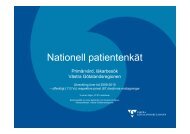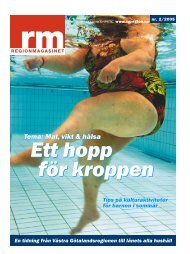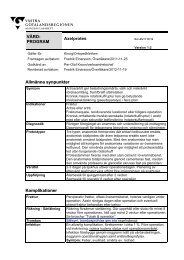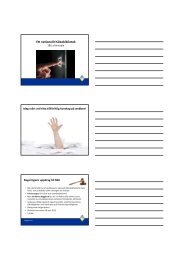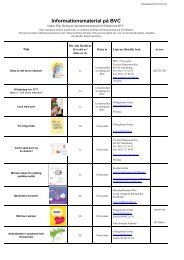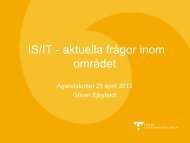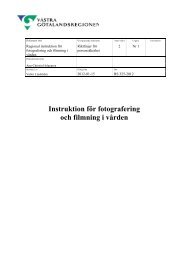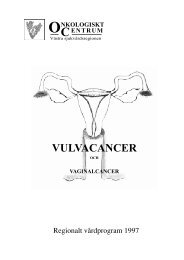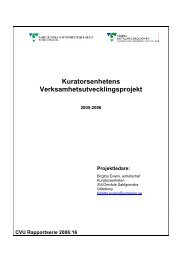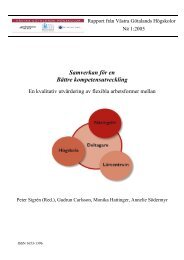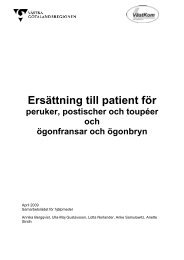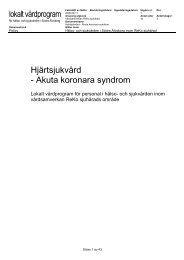FOURTEENTH ANNUAL EUROPEAN PRESSURE ULCER ...
FOURTEENTH ANNUAL EUROPEAN PRESSURE ULCER ...
FOURTEENTH ANNUAL EUROPEAN PRESSURE ULCER ...
You also want an ePaper? Increase the reach of your titles
YUMPU automatically turns print PDFs into web optimized ePapers that Google loves.
Thursday September 1st<br />
Proceedings of the 14th Annual European Pressure Ulcer Meeting<br />
Oporto, Portugal<br />
Pressure Ulcers in a Post Disaster Setting: Benefits of Advanced Wound Care Techniques<br />
McNutt, J, Miller, J, Cherry, J, Eyssallenne, A<br />
Hospital Bernard Mevs Project Medishare, Haiti, jbm911@hotmail.com<br />
Introduction<br />
On January 12, 2010 Haiti was rocked by a 7.0<br />
magnitude earthquake just outside the capital city of<br />
Port au Prince. Though the earthquake only lasted 35<br />
seconds, approx 316,000 people died, 300,000 were<br />
injured and 1,000,000 made homeless. This was<br />
devastating to a country already mired in poverty, and<br />
lack of advanced medical care. Many injuries required<br />
patients to be non-mobile before definitive care could<br />
be provided, while others were left with spinal cord<br />
injuries [SCI], conditions that occurred secondary to<br />
trauma even before the earthquake. Many of these<br />
people were left lying on the dirt floors of their tents or<br />
lying on hard cots in field hospitals with no pressure<br />
relief capabilities. Multiple pressure ulcers of all<br />
stages were created. Our presentation will discuss the<br />
need for advanced wound care techniques, especially<br />
following a disaster of this sort, types of techniques<br />
used and examples of patients treated.<br />
Methods<br />
Here we present 2 case studies of patients (E and C)<br />
treated at Hospital Bernard Mevs Project Medishare in<br />
Port au Prince, Haiti. Both had spinal cord injuries and<br />
sustained their wounds following periods of prolonged<br />
immobility and inadequate care which included lack of<br />
medical support, lack of pressure relieving surfaces<br />
and poor nutritional intake.<br />
At the time of admission to our service E (a 24 y/o<br />
quadriplegic since March 2010) had a Grade 4 sacral<br />
ulcer with comorbidities of systemic infection, severe<br />
malnutrition and severe depression. She sustained her<br />
wounds from sleeping on hard flooring.<br />
C is a 40 year old paraplegic (since 2004) who<br />
presented with multiple wounds (up to grade IV) on his<br />
sacrum and lower limbs. He lost his home in the<br />
earthquake and had moved to a tent where he slept on<br />
the ground and had no pressure relieving surfaces. He<br />
had comorbidities of severe anemia (Hg 4.4g/dL),<br />
systemic infection and severe malnutrition on<br />
admission to our hospital.<br />
Both patients were treated with a combination of<br />
surgery, silver dressings, KCI V.A.C. ® negative<br />
pressure therapy, physical therapy, appropriate<br />
pressure relief and nutritional supplementation during<br />
their stay.<br />
Results<br />
Wound measurements<br />
Patient Date Wound Size<br />
E sacrum Oct 2010 13.5 x 6.6 x 3.5cm with<br />
undermining<br />
Apr 2011 Healed<br />
C sacrum Oct 2010<br />
13.4 x10.3 x11.0cm<br />
Apr 2011<br />
Healed with STSG<br />
61<br />
C (R Troch)<br />
C (L Troch)<br />
Oct 2010<br />
Apr 2011<br />
Oct 2010<br />
April 2011<br />
6.5 x 6.2 x 1.4cm<br />
2x2cm<br />
5.7 x 5.1 x >0.1cm<br />
Healed<br />
Discussion<br />
Pressure ulcer prevention in SCI patients is a<br />
challenge. Poor nutrition and inadequate pressure<br />
relief surfaces, compounded with decreased personnel<br />
to provide care to patients in need contribute to<br />
formation of wounds. Our case studies illustrate the<br />
need for advanced wound care in a post disaster<br />
setting and show that provision of such services can<br />
offer the opportunity for complete healing of severe<br />
wounds. Due to the lack of pressure relief surfaces, it<br />
is also extremely important to increase education level<br />
in mobility and therapy techniques to prevent further<br />
pressure ulcers.<br />
It is well known that good nutrition is necessary for<br />
wound healing. Patients in “first world countries” with<br />
wounds frequently require special nutritional<br />
interventions. This is even more important in “third<br />
world” countries when even prior to a national disaster<br />
there is widespread starvation and malnutrition.<br />
Deficiencies in protein and essential vitamins weaken<br />
collagen synthesis, cellular cohesion, and leave soft<br />
tissue more susceptible to breakdown and infection<br />
due to immunosupression. [1]<br />
Use of KCI’s V.A.C. ® Negative pressure wound<br />
system, silver dressings, pressure relieving<br />
techniques, physical therapy and improved nutritional<br />
support have either closed, or greatly improved the<br />
status of the wounds of the presented patients.<br />
Educating local staff and patients in turning schedules,<br />
mobility, and proper nutrition will continue to help heal<br />
current ulcers, and hopefully prevent new pressure<br />
ulcers from forming.<br />
Clinical relevance<br />
We demonstrate herein that advanced wound care<br />
techniques, proper nutrition, education and superior<br />
support surfaces will improve success in wound<br />
healing in resource poor settings.<br />
Acknowledgements<br />
We appreciate the help of the staff and administration<br />
of Hospital Bernard Mevs, and Project Medishare, and<br />
numerous volunteers from all over the world.<br />
References<br />
[1] Bryant R., Acute and Chronic Wounds. (Mosby-<br />
Year Book Inc. 1992) p.115<br />
Copyright © 2011 by EPUAP



